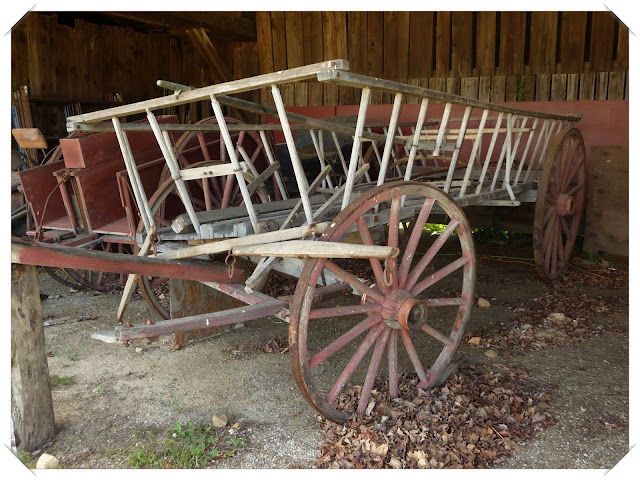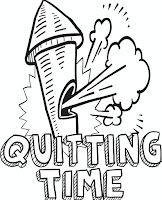This post topic came after a 45-minute weekend road trip from Nashua to the small town of Canterbury, NH, where the major attraction is the Canterbury Shaker Village historic site.
(Spoiler Alert: this is a longish blog post because I found the subject matter very interesting and perhaps you will as well.)
Canterbury Shaker Village was founded in 1792 through land from community members, Benjamin and Mary Whitcher who donated their 100-acre farm. The village began with 43 members. In 1803, there were 159 members and in 1850, the site had 3,000 acres with a community of 300 housed in 100 buildings.
Today, this village is one of the most intact and authentic surviving Shaker community sites with 25 original buildings, 4 reconstructed buildings and nearly 700 acres of gardens, fields and forest. In 1993, it was declared a National Historic Landmark for its architectural integrity. In years past, its been visited by over 50,000 people from the US and 45 countries.
The village is open weekends for free outside only tours. On a warm Saturday, tour guide Ann, led our group, Grenville and myself, on a very informative 45-minute tour. We learned a great deal. Going inside would have enhanced the visit, but like two other New England Shaker villages, buildings are likely to remain closed through 2020 (these are COVID-19 related closures).
In 1905, there were 100 members in the Canterbury Shakers, down to 49 in 1916. The last male member in the village, Brother Irving Greenwood, died in 1939. By 1965 with eight remaining Shaker sisters, leaders voted to close the Shaker Covenant, the document all new members signed to join. In 1969, remaining Canterbury sisters laid plans to preserve the Shaker legacy and property by founding Canterbury Shaker Village Inc.
Whenever we visit a new place, there's always more to learn. This week we watched a 1984 documentary by filmmaker Ken Burns, Hands to Work. Hearts to God, part of The American Experience series. It provided a wealth of information, and if you're interested in learning more, I would highly recommend it.
Who were the Shakers?
They called themselves the United Society of Believers in Christ’s Second Appearing, but the world called them Shaking Quakers (Shakers) because of enthusiastic worship services that included singing, dancing and stomping to shake off sin.
They were admired and derided, imitated for successes and ridiculed for eccentricities. Some of these involved following a precise order when piling bones on plates after a meal; lining up in a prescribed order; entering a room to the sound of a horn and through separate male and female doors; stepping first on the right foot when going upstairs; when hitching a team, harnessing the right-hand horse first.
What did Shakers invent?
This religious group was far from a group of zealous worshippers, they were Movers — inventors and innovators. Shakers created the flat broom, metal nib pen, clothespin, no-kill mousetrap, seed packets, a machine for making tongue-and-groove boards, and the circular saw.
They've been credited with over 100 patents, 37 of which have been verified, including: an addition to the back of chair legs to allow tilting back without slipping, a commercial oven that had revolving metal shelves pierced to allow even heating and could bake 60 pies or 70 loaves of bread at once. We spotted one of these ovens through a window at the bakery shop. They provided merchants with point-of-sale materials, like posters for store windows, and are thought to be the first to market small, consumer-sized packets of garden seeds.
Shakers believed that a song, an invention, the inspiration for a building were gifts from God, not individual accomplishments. This explains why they failed to patent some inventions until they realized others were stealing them. Some of their concepts launched industrial careers for less altruistic outsiders who marketed and made fortunes from them.
Shakers are credited with writing 10,000 pieces of music. Between 1842 and 1908, over 10 different Shaker hymnals were published at Canterbury. Simple Gifts, written in 1838 by Shaker Joseph Brackett became famous after Aaron Copland used in Appalachian Springs in the 1940s.
How widespread were Shakers in the US?
Shakers started in Great Britain in 1750 as a group of English Society of Friends (Quaker) dissidents. Eight followers left England and landed in NY in 1774 under the leadership of “Mother” Ann Lee, a mill worker, who when she died 10 years later, had laid the groundwork to spread the faith based on the principles of communal possessions, celibacy, pacifism, open confession of sins, and equality of the sexes.
At its mid-19th century peak, there were nearly 5,000 members living in 18 self-contained communities from Maine to Kentucky. Three of those were in New England: Canterbury Shaker Village in NH, Hancock Shaker Village in the Berkshire Hills of Western, MA, and Sabbathday Lake in ME, the only active Shaker community in the world today which is now shutdown for public visits.
Communities were organized into families of 30 to 90 people. Work was a holy act, a belief reflected in high quality workmanship and design. Members gave up families and property, and were welcomed into “holy families” where men and women lived as brother and sister, with all property held in common. Males and females worked together dividing workloads and decision-making.
Seventy-five years before the emancipation of the slaves and 150 years before women began voting in America, Shakers practiced social, sexual, economic, and spiritual equality for all members. Although converts devoted themselves and their possessions to the community, they could leave at any time.
If Shakers were celibate, how did they grow?
They relied on conversion. In the early 19th century in America, people were questioning traditional religious beliefs and social order, which led many to embrace the Shakers’ progressive thinking. Shakers were celibate after becoming members and did not marry or have children. They took in orphaned children and raised them; no child was turned away and all were fed, clothed, and educated in academics and trades. At 21, they could leave or sign the covenant to become members.
Formerly, being called a Shaker was considered a derogatory name. It later became an indicator of quality, ingenuity, value and was trademarked as a logo to products. Renowned for their furniture products, especially chairs, they produced tables, cabinets and other household pieces.
Unlike what's commonly seen in Shaker antiques and most museum pieces Shakers embraced color. Nearly all original furniture, built-ins, household objects, even floors were painted with colors dictated by their sect, blue, red, yellow or green. Shakers also dyed cloth they wove in colors of salmon, pink, red, Prussian blue, yellow, orange and purple.
Canterbury Shaker Village resembles other similar villages with main buildings serving a utilitarian communal society: dwelling houses, shops, stables, a laundry, school, ministry, and an infirmary.
The Meeting House ↓ played a primary role in the daily functioning of the community. Worshippers listened to community elders offering relevant lessons.
The village prospered through farming, livestock breeding, mills, the production of seeds and herbal medicines, printing and inventions. Its print shop which became the site of published materials for all NE Shaker communities, also accepted jobs from outside the community. Village members patented a commercial sized washing machine that won a gold medal at the 1876 Centennial Exposition in Philadelphia (PA) and models were later sold to hotels.
In 1834, eldress Dorothy Durgin designed a hooded cloak that fit over bonnets to keep sisters warm. This fostered a fashion trend when Grover Cleveland’s wife wore one to his inauguration. The clothing line expanded during to The Hart and Shepard Company in 1891, founded by Sister Emeline Hart and Shaker Deaconess and Trustee Lucy Ann Shepard, who went on the road traveling to resort hotels as far as Florida with trunk-loads of cloaks and other handmade goods.
Shakers embraced technology and useful inventions
Soon after the availability of modern household appliances, Canterbury sisters purchased a KitchenAid mixer, followed by an electric refrigerator and a Maytag washer.
In 1901 the New England Telephone Company installed telephones at Canterbury Village. The village had one of the first cars in the state, a 1907 REO, replacing the horse and carriage and removing long distance travel between Shaker communities
In 1910, the NH village built a powerhouse at a cost of $8,000, which powered electric lights in 16 buildings. The powerhouse contained a gasoline-powered, direct-current generator and storage batteries. This was before the NH state building in Concord was still burning gas. In 1925, they purchased power from the local utility, but kept the powerhouse as a backup.
Shakers were not ascetics and had plenty of food and clothing. They believed cleanliness, neatness, and order led to serenity, but did not believe in drudgery. Tasks rotated with free time for entertainment like community plays and concerts.
They understood the value of “curb appeal,” positioning the most impressive, lightest colored buildings close to public roads or on high elevations to serve as advertisements. This former barn is now the museum store, closed during our visit.
At Canterbury, a range of ventures developed over the years and included selling patented medicines, clothing, cookbooks, and furniture. They also sold farm products of milk, cream, butter; lemon syrup for lemonade and medicinal use, canned vegetables, baked beans, pickles, honey, tins of culinary herbs, candy. Edward D. Pettengill of Portland, ME, partnered with the Shakers to bottle and sell Shaker-made ↓ products.
The wood shed ↓ stored large quantities of wood to cook and provide heat in winter. This is the last remaining wood shed at Canterbury. A nearby identical one was destroyed when the 1858 cow barn burned in 1973.
The foundation stones for the cow barn can be seen here ↓. This was a huge barn, 200 feet x 45 feet, and it housed 100 dairy cattle. A 25-foot ramp provided access at either end. Sadly, only these stone foundations remained after the barn was destroyed by fire.
The horse barn and an equipment barn ↓ with several old carriages remain standing.
The 1785 Syrup Shop ↓ may have been first used as a lodging. Later, it was used it to make medicinal syrups, most famously Thomas Corbett's Compound Concentrated Syrup of Sarsaparilla, known as The Great Purifier of the Blood and other Fluids of the Body.

The Canterbury Dwelling House ↓ was built in 1793. Men and women entered through different doors and stairways, and slept in separate quarters. Sisters and brothers never touched.
The creamery ↓ was where milk products from the large herd of dairy cows were processed and later sold.
The village had its own firehouse complete with a bell tower.
There was also an on-site infirmary ↓ for ill or injured members. When traditional cures failed to work, medical practitioners were consulted from the surrounding area.
And, because I didn't know the differences between these religious sects, here's some information.
How do Shakers differ from Amish and Quakers?
The Shakers, Amish, and Quakers differ theologically and in the way they live. Unlike Shakers and Amish, Quakers do not live in their own communities. Unlike Amish and Quakers, Shakers were celibate and did not marry. Unlike Amish, Shakers believed in full gender equality. And while the Amish reject most technology, the Shakers embraced technological advances.
? Has anyone else using the Safari browser been experiencing problems with Blogger? This post took a longer than usual time today as I kept getting the message: "Safari cannot connect to the server" after selecting Design in the header bar. I found a workaround, but it was cumbersome. I'm not sure why this issue started, but hope it's a temporary glitch and not something that will make future posting and updating difficult. A secondary issue is that when I went to update this post, some parts of the original wording had disappeared, very strange indeed. I apologize, in advance, if you find some incomplete sentences.



















































